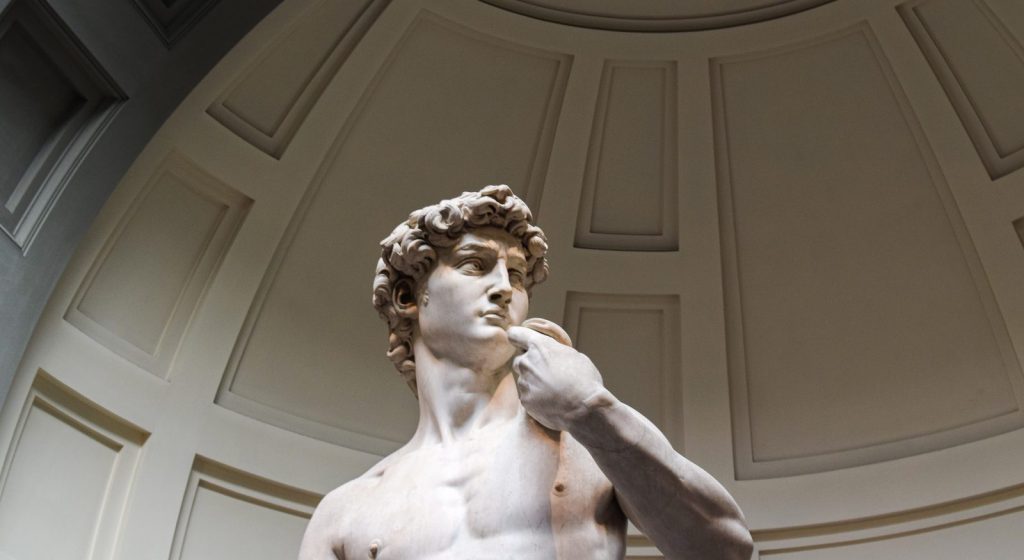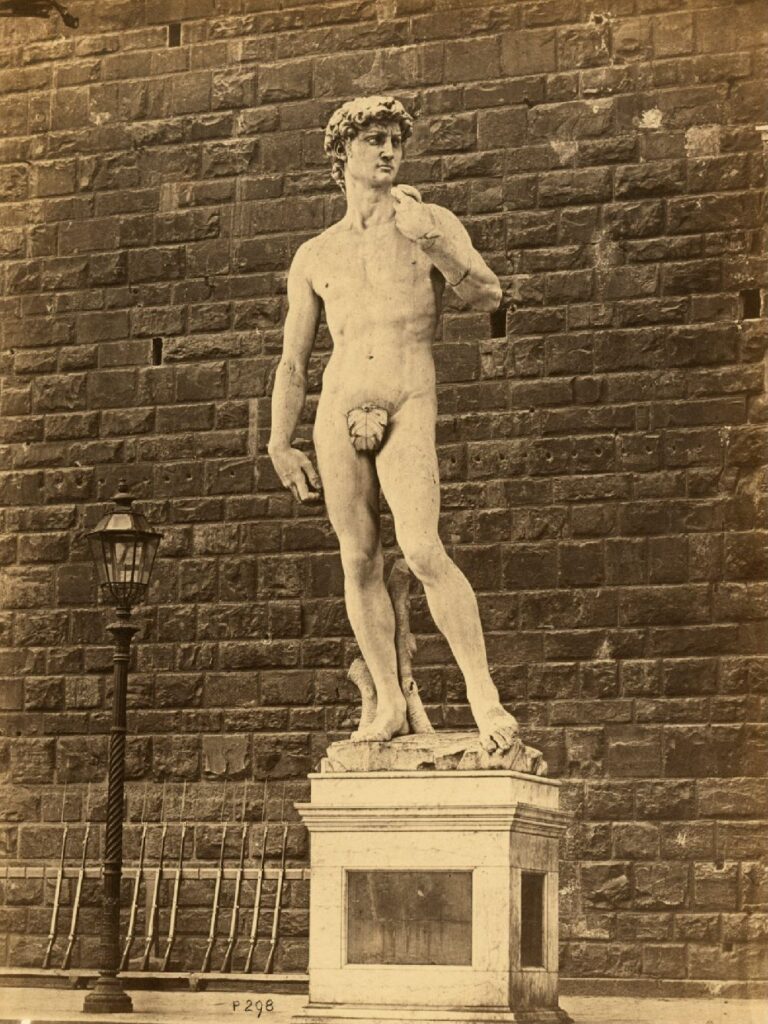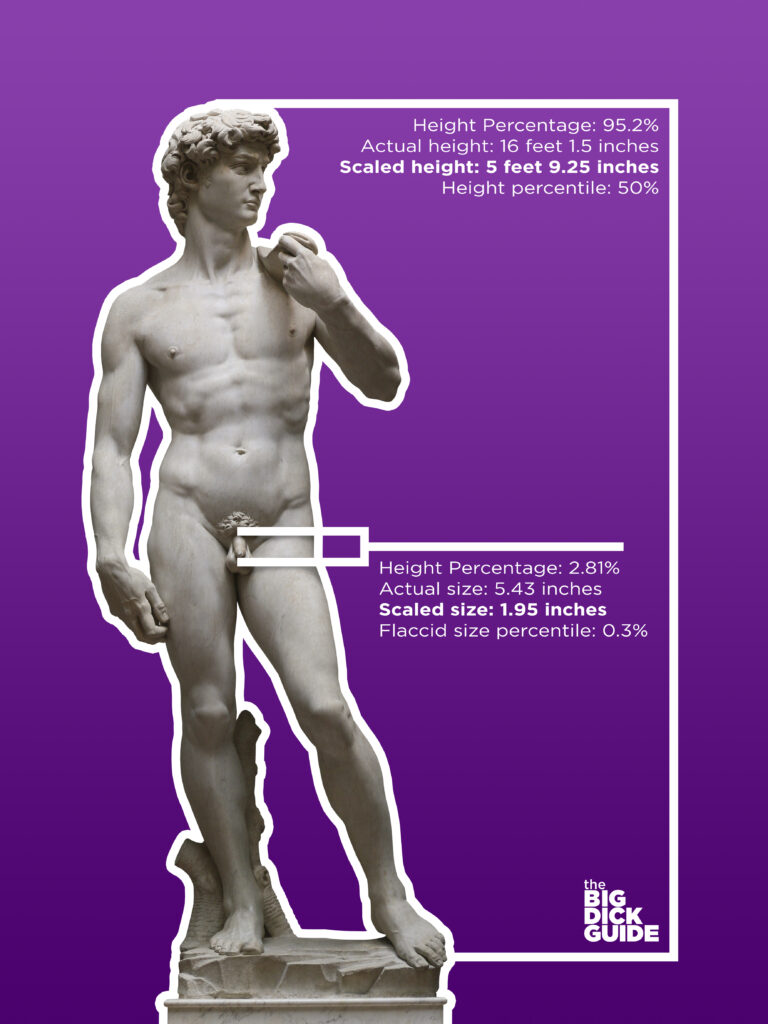
"David" is easily one of the most famous statues in history. Michelangelo's 16th-century sculpture is an impressive sight and study of human anatomy, with an imposing 17-foot height and a remarkable level of detail and accuracy to his musculature. Michelangelo even cannily adjusted the state's proportions to be somewhat unnatural (David's head is oversized) so it would look "right" when viewed from a lower perspective as it so often is. It's truly a masterpiece in marble.
And there is, of course, David's penis.
Humans have long been fascinated with dicks, but over time what's considered to be desirable has swung from one extreme to the other. Around the beginning of the 21st century, it as all big dicks all the time, and we're starting to see a shift in popular attitude back towards more reasonably sized phalluses. Back in ancient Greek times, smaller penises were prized and larger ones were considered worthy of mocking.
But ancient Greece came to a close more than a millennia before Michelangelo took chisel to stone and began crafting David in the early years of the Renaissance. In fact, during the Renaissance there was an overemphasis of masculinity in popular culture, most evident in the bulge-enhancing codpiece. In 1504 when David was unveiled, big packages were in vogue.
So what gives with the small penis on this towering stone figure, who is otherwise looked upon as a paragon of physical masculinity? That cultural drive for a man to accentuate the size of his dick was not one that was held in art. The artistic preference for more modest penises carried through from the ancient Greeks and up through the Renaissance. There are multiple reasons behind this, from holding on to old artistic values to copying the old masters to wanting to deemphasize the sexuality of the figure. And there were and still are practical concerns like avoiding unsupported marble protuberances that would easily break off during sculpting. You can always take away marble; adding it back in is a lot harder.

There's also a physiological aspect at play here. We've all experienced shrinkage — both from the cold and from fear. David is depicting the biblical showdown between David of Israel and the giant Goliath. David is armed with just a sling, and would no doubt be experiencing fear — as a close-up of his face makes clear. The human physiological response to fear includes redirecting blood flow to important organs like the limbs and away from stuff that's not needed to fight or run from it, like the penis. Thus, fear shrinkage, as proposed by an Italian doctor in 2019.
The comparatively small size of David's penis wasn't modest enough for some. When Queen Victoria first laid eyes upon a cast of David at the new Victoria and Albert Museum, she was aghast at the stark nudity of the statue. The museum created a huge plaster fig leaf to drape over his manhood when the Queen visited, and a similar gif leaf also covered up the original in Florence during the 19th century.
How big is David's dick?
It's time to do the math!
David stands 16 feet 11.5 inches tall from the base of the statue to the top of his curly locks. The base makes up 5% of the statue, which puts David's actual body at a height of 16 feet 1.5 inches. His penis is 2.81% of that body height, which works out to a raw measurement of 5.43 inches. It's worth noting that multiple researchers have shown there is hardly any correlation between height and penis size.
If we scale that down to a 50th percentile 5-foot 9.25-inch adult male, which means David's scaled flaccid penis is 1.95 inches long — which puts him in the bottom 0.3% of penises measured.

Before you feel bad for David, it's worth noting that he's 1) facing down Goliath, so there's definitely some fear shrinkage going on. And he's also standing butt naked in the middle of a stone room while everybody looks at him. Shrinkage city, population him.
Maybe he's a grower; we have no way of knowing.
So yeah, if you've looked at David and thought "that penis seems kinda small", you're right. David is indeed on the small side — but he's got artistic history and physiological responses on his side.











